I was looking for maps this afternoon to provide at a lecture tomorrow morning. I found the usual array of political maps which remind us how large the Pacific is when it comes to our role in Asia but doesn’t really provide much else.
I came across a couple of others that showed those diabolical Chinese claiming various land features Beijing tries mightily to build in fhe face of rising waters in the South China Sea. No question those land features are bigger than they were two decades ago. We all ought to know, however, that the advent of both rising waters from melting glaciers and ever more potent typhoons in this region make Beijing’s task hard over the long haul. Beijing’s position in the South China Sea is definitely stronger than thirty years back.
I also found one that lists U.S. military bases in the Indo-Pacific.
https://www.researchgate.net/publication/339122250/figure/fig1/AS:856318290165760@1581173598691/US-Military-Bases-in-the-Indo-Pacific-Source-The-invisible-empire-Why-the-United.png
I don’t replicate it here because I am having trouble copying the map but offer you the link. (Definitely operator error on the map; apologies).
The key to this rather fascinating map is not that it lists U.S. bases in Singapore, mainland Southeast Asia, the Maldives in the Indian Ocean, three locations in Australia, and several others down the eastern edge of the waterway leading to the Strait of Malacca. The Malacca Strait is that waterway vital to shipping for the world but especially the energy transiting to East Asia from the Middle East. Too often we forget that an alternate transit through one of the Indonesia Straits or all of the way around Australia are possible but considerably longer distances and time.
The Maldives? We have a base in the Maldives? Seriously? I don’t think so but perhaps I have to learn a lot more.
East of Malacca? We have military relationships—and some people desperately want large footprints on the ground for military personnel and equipment—with various nations but we don’t actually have bases. In case of a conflict, we would love to have bases but this map is a bit on either the optimistic or aggressive side.
This map instead is Beijing’s worst nightmare (which will only feed conspiracy theories already rampant there) of our ability to hem in China: containment. From Beijing’s vantage point, the U.S. relationships at whatever stage evidence intent to prevent China from achieving its traditional position as the dominant state in Asia.
Why else, Chinese analysts ask, would we need links to some of these countries? Some Chinese understand we have been operating in Asia for more than two centuries while other more skeptical voices say we should withdraw to the eastern rim of the Pacific where we belong.
Beijing knows the United States has formal military self-defense agreements with Japan (1954), the Republic of Korea (1953), the Philippines (1951), and Australia & New Zealand (1951). Though it’s inevitably cited, the agreement existing between Thailand and the United States is not, repeat not a mutual defense treaty but is an agreement through the 1954 Southeast Asia Treaty Organisation agreement which still clings to life in name only.
These are Senate-ratified mutual defense treaties whereby the United States would come to the aid of the other party and those nations would come to support us in case of attack. The United States went on a signing binge under the Truman and Eisenhower administrations in the early 1950s to thwart Communism felling countries as dominoes across the world.
We had a 1954 agreement with the Republic of China until President Carter shifted relations from Taibei to Beijing on 1 January 1979, invalidating the mutual defense accord. While the United States is currently helping the island upgrade its defenses, there is no formal treaty in place under which we would formally respond on their behalf after an attack. The 1979 Taiwan Relations Act is not a treaty but a U.S. law saying we will provide articles of a defensive nature to Taiwan. That is rather different from guaranteeing we would shed U.S. blood as true in these other cases. As I have noted several times, I am not sure that many in Washington care about this distinction as they seem convinced we would automatically send troops.
We don’t have a mutual defense treaty with Singapore, for example. This island nation prefers to maintain its independent stance in the ever growing tug-of-war between Washington and Beijing for nations to choose a side. As true with several countries, Singapore’s wily diplomats warn about putting them in the position where they would have to choose between the United States and the PRC in a conflict. With more than half its population having Chinese heritage, that would be a most precarious decision for the island. I am somewhat dubious that many of the citizens of the region would actually agree to send their daughters and sons to war in the Indo-Pacific but it would certainly depend on the particular context.
Other countries are similarly nervous about the choices that defense agreements force. Vietnam, a Communist-governed nation, has extremely tense relations with its northern neighbour. For hundreds of years, China occupied a substantial portion of the current footprint of Vietnam, a fact made clear in a graphic set of exhibits at the national war museum in Hanoi. The last war China fought (poorly, at that) was when it invaded Vietnam in early 1979 to draw Hanoi’s forces away from Cambodia, long a Beijing client. Rather than whip the Vietnamese, Beijing limped home six weeks after its invasion. The Chinese purport ‘they taught Vietnam' a lesson’ but that terminology is Bejing’s rationalising for less than victorious outcomes (they use similar language about the Korean War) rather than acknowledging defeat.
The border dispute between Vietnam and China ended twenty years ago but tensions continue over competing claims in the South China Sea.
Yet Hanoi is nowhere near ready to sign agreements with the United States to allow U.S. forces on their territory. Not only do scars of the U.S. war effort prevent this step but the Vietnamese recognise that Beijing physically casts a huge shadow over this region. the PLA can arrive much more easily than the United States in a conflict. Additionally, Vietnamese nationalism makes signing on to such accords difficult to swallow following centuries of their own forms of humiliation with regard to other great powers.
The aforementioned map also hints at U.S. bases in Pakistan. It’s challenging for the United States to describe a country with whom we have more frayed relations over the past twenty years. Pakistan’s dubious success at solidifying its own nation is a far greater danger than any outsiders, including India, invading. With Washington’s withdrawal from Afghanistan, the idea that the United States would have bases in Pakistan is simply unrealistic. Islamabad’s focus is on India with which Washington seeks better ties but finds that nationalist sentiments of its own prevent anything like an alliance.
In short, while China may fear that Washington is building a wall around it, facts simply do not support the contention now.
Aspirations are a different matter but they cut different ways. The Biden administration talks incessantly of the need for allies and partners but we are far from having formal alliances with most of these states as shown. States pursue their own interests first and foremost. In many cases, those interests include having options should the United States abandon Asia.
Congress, with its partisan divide on so many things, is close to unanimous that China is our major threat but concentrates on greater U.S. defense spending as much as supporting allies and partners. Democrats and Republicans approach our foreign relationship across the United States are pretty different, if they have any views at all.
It’s difficult to overestimate the doubts sown by the past decade as U.S. public opinion soured on internationalism in the aftermath of the globalisation experiment and the 2008 financial meltdown. Just with Japan, the unwillingness by either of the major 2016 U.S. presidential candidates to agree to the Trans Pacific Partnership rece forced fundamental doubts about our staying power in the region.
President Trump’s vocal distrust of the Japanese and Korean financial commitments to mutual defense further undermines our ability to convince Asians of the benefits of ties. Japan and Korea currently are discussing increased domestic defense commitments in the face of Chinese aggressiveness but the possibility of a return Trump administration has to give them pause. President Trump’s known doubts about the viability of Mutual Defense agreements he sees as lopsided (regardless of the texts of those agreements) and his ambivalent behaviour towards Xi Jinping make his unpredictability undermine Asian links.
The Biden administration thus aspires to build alliances but is left with somewhat more fragile partnerships of mutual interest. The AUKUS accord with Canberra and London is a notable exception but one that requires decades’ political and financial commitment to bring it to fruition.
The map for which I included the link above is thus not correct. It’s possible that the U.S. military will have bases in all of those locations in the future but highly doubtful because of those host nations’ hedging and the preferences of the U.S. population. However, concerns about China grow and Beijing’s concerns about Washington’s actions in this area are equally important.
Nothing in national security is static. The Indo-Pacific is as fluid as the rest of the world. It’s just hard to remember sometimes in the face of lack of information or attempts to paint different pictures from reality.
We had quite a storm last night, followed by a double rainbow and a beautiful sunrise this morning. I do like to share….FIN

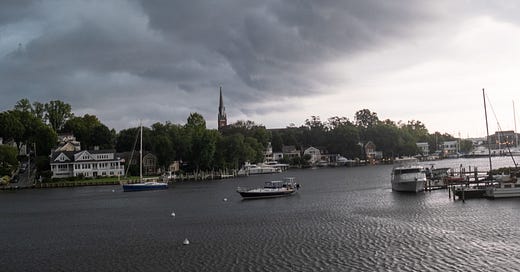



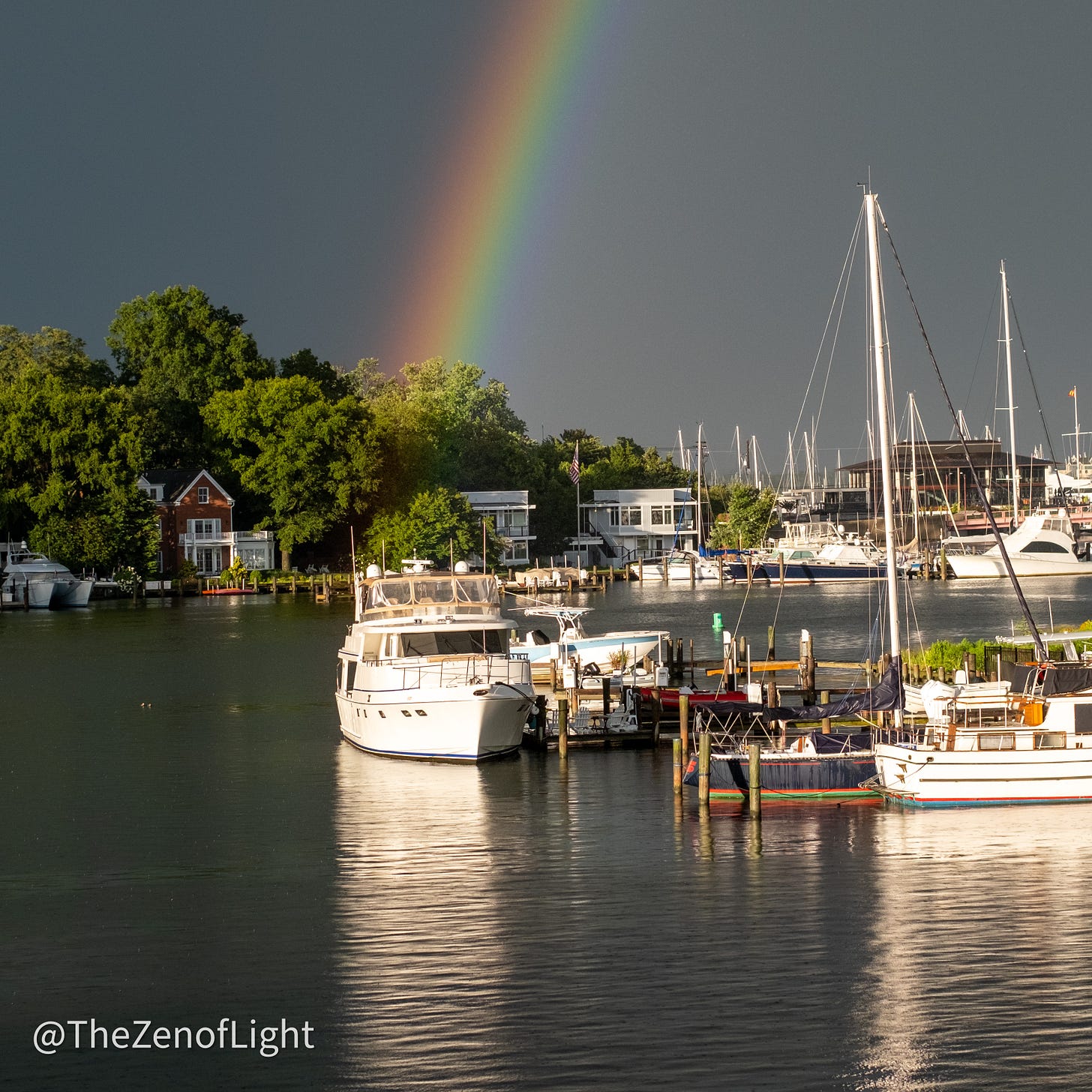
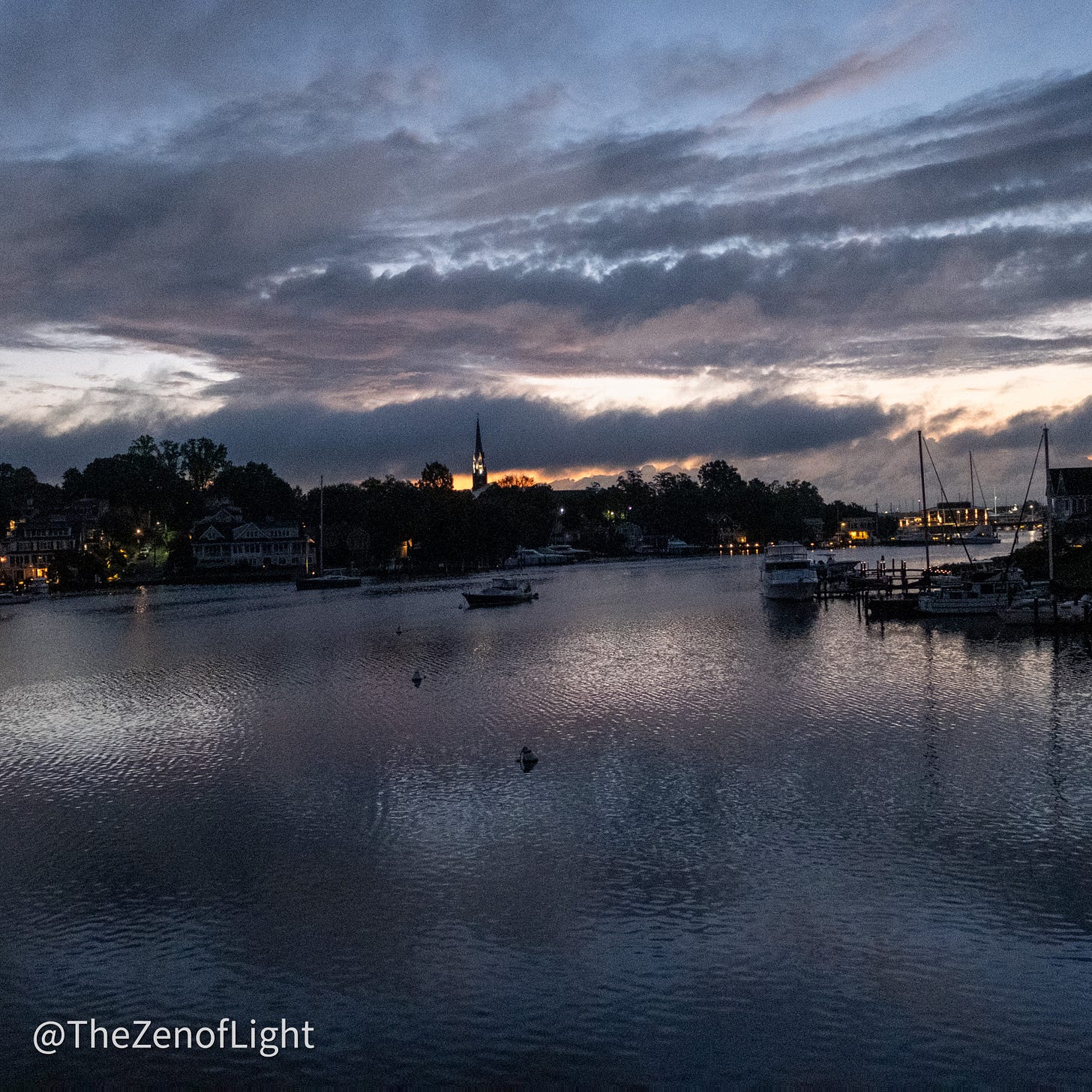
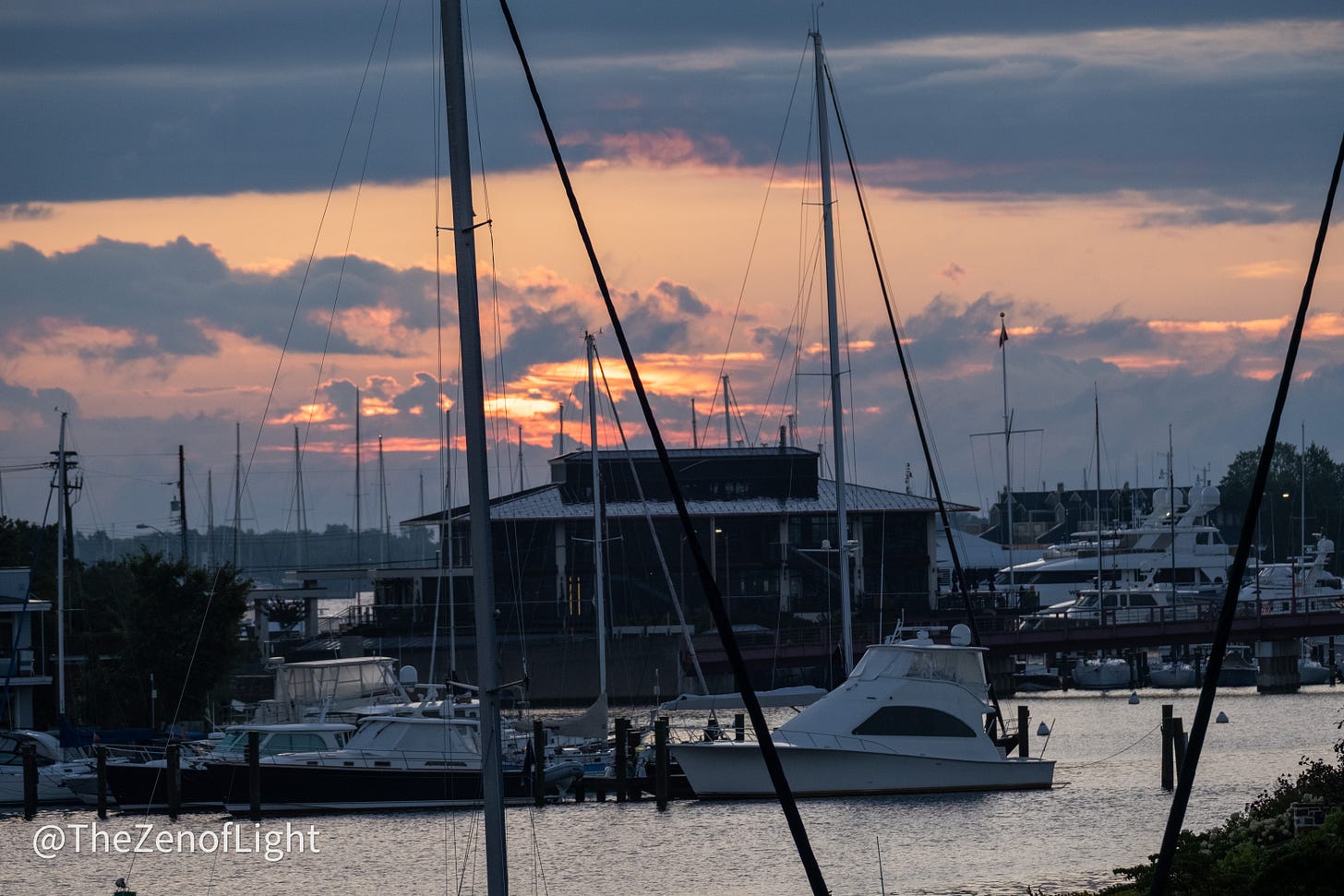

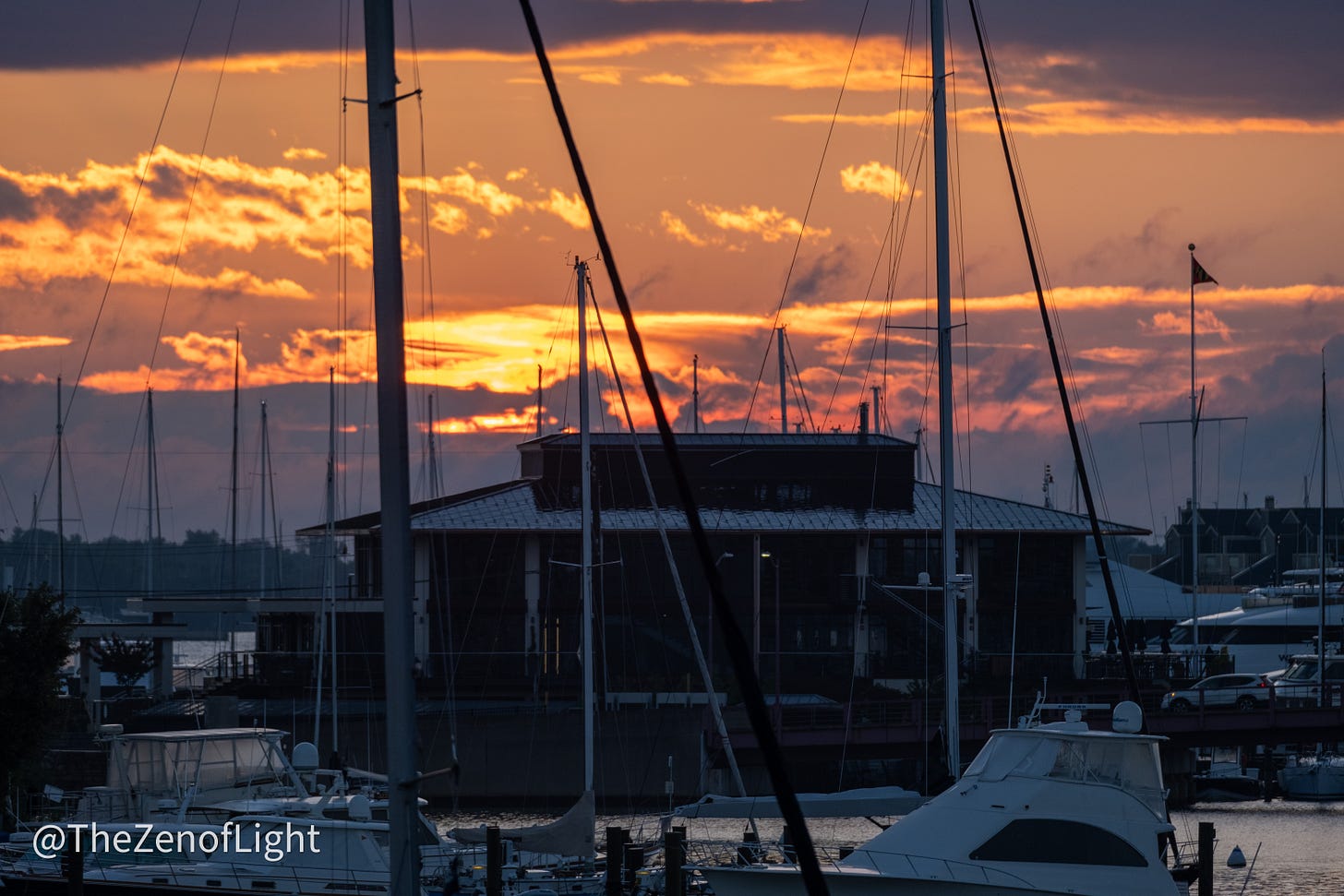
It is definitely a fair comment to raise the Quad. I did not discuss it b ecause I was focusing on bilateral (except ANZUS and AUKUS) since multilateral security agreements are so much less common than Europe. Japan's history is a major stumbling block for many in the region which is one of the reasons I think the Quad has frailties. Additionally, Modi's somewhat mercurial reactions strikes me as potentially problematic. But, there is no question the Quad concerns China much like so many things. They want to be the center of things but become obsessed with anyone then reacting to them in that position by responding to them. Thanks for raising the point about the Quad.
Interesting regional update, Cynthia. Thank you for sharing your informed perspectives.